Nwijo(뉘조)
0m 14685 2021-04-19
27, Insadong 14-gil, Jongno-gu, Seoul
+82-2-730-9311
Nwijo (뉘조) is a Korean restaurant specializing in wild vegetable cuisine. The name ‘Nwijo’ means ‘the god of the silkworm,’ and likens wild vegetables to silkworms in that both can be eaten in their entirety. The restaurant serves original full-course Korean meals that are prepared using hundreds of kinds of wild vegetables, including special seasonal vegetables.
A typical full-course meal starts with delicious pumpkin porridge, followed by seasoned wild vegetables, root vegetable ssam (condiments wrapped in vegetable leaves), slices of boiled meat, and steamed lotus leaf-wrapped rice served with jjigae (Korean stew) and various side dishes. This kind of traditional feast is pleasing to both the eye and the palate and is topped off with sikhye (traditional sweet rice drink). Lunch specials are also available.
Nuri (누리)
17.231116705480638m 7603 2019-11-26
23, Insadong 14-gil, Jongno-gu, Seoul
+82-2-736-7848
Located in the neighborhood of Insa-dong, traditional Korean lunch box and tea restaurant Nuri brings out the true beauty of hanok while implementing western dining culture with tables and chairs.
Nuri uses the finest grains directly from agricultural regions throughout the country, offering nutritious rice along with mildly seasoned side dish menus, taking advantage of the ingredients' natural flavors. Nuri uses its effective take-out and delivery system to cater to businesses and events.
Jirisan Restaurant (지리산)
32.5176316432096m 27614 2019-08-01
30, Insadong 14-gil, Jongno-gu, Seoul
+82-2-723-4696
Jirisan is one of the representative Korean restaurants in Insa-dong, an area known for its traditional culture. One of the trademarks of this restaurant, besides its amazingly delectable bean and tofu dishes, is a wooden sign that welcome guests into a neat and cozy interior.
Each day, fresh beans are ground at the restaurant to prepare dishes such as soybean paste, soft tofu, and bean-curd tofu stew. Bean-curds are prepared by using seawater, which gives the tofu a unique flavor. The fresh and clean taste of the tofu is one of the many reasons that choosey tofu aficionados flock to the restaurant.
Not just limited to tofu, Jirisan presents customers with a full-range of side dishes such as kimchi, japchae (glass noodles with sautéed vegetables), cucumber kimchi, seasoned seaweed, braised lotus roots, roasted yellow corbinas (a type of fish), leafy greens, bean-curd stew, and more. The restaurant gives visitors a chance to experience a hearty traditional Korean-style meal, but has thoughtfully toned down its seasonings to appeal to a wider audience (particularly those not used to spicy foods).
One of the recommended menu items is the Jirisan set meal, which offers diners the chance to sample foods that are popular in the Jirisan region. Adventurous diners may want to try the sea urchin soup or dried Pollack soup.
The restaurant, originally a traditional Korean house, has been modified over the years to better suit the needs of its customers. The walls surrounding the structure were removed and a glass ceiling was installed to allow guests to enjoy the natural light of the sun as they sample some of the area’s best traditional Korean cuisine.
853 (팔오삼)
38.546531964039346m 77 2021-03-24
16, Insadong, 12-gil, Jongno-gu, Seoul
+82-70-8832-0853
This is a juicy pork restaurant. This Korean dishes restaurant is located in Jongno-gu, Seoul. The most famous menu is grilled pork belly.
Insadong Sagwanamu (인사동사과나무)
38.65231810127185m 174 2021-03-29
24-1, Insadong 14-gil, Jongno-gu, Seoul
+82-2-722-5051
This is where you can dine on the outdoor terrace. This restaurant's signature menu is steak. This Western dishes restaurant is located in Jongno-gu, Seoul.
Okjeong (옥정)
41.360532842996115m 20936 2021-03-19
18, Insadong, 12-gil, Jongro-gu, Seoul
+82-2-733-5412
A traditional Korean restaurant serving hanjeongsik (Korean table d'hôte) for 30 years now. The representative menu is Korean table d''hote. This is a Korean cuisine located in Insa-dong, Seoul.
Bukchon-ri Dullegol (북촌리둘레골)
44.585483820017686m 96 2021-03-19
44 Insadong 14-gil Jongno-gu Seoul
+82-2-747-9700
A restaurant with Korean traditional house-themed interior design. The representative menu is Korean table d''hote. This is a Korean cuisine located in Insa-dong, Seoul.
Vegetarian Restaurant Osegyehyang (채식요리전문점 오세계향)
55.251169848163954m 27850 2019-12-23
14-5 Insadong 12-gil, Jongno-gu, Seoul
+82-2-735-7171
Osegyehyang is a vegetarian restaurant location in Insa-dong, a street known for its traditional culture and crafts. It serves various dishes that cater to the needs of vegetarian customers.
Mingadaheon Tea House (Min's Club) (민가다헌)
74.57386304194333m 1795 2015-10-23
23-9, Insadong 10-gil, Jongno-gu, Seoul-si
+82-2-733-2967
Le nom d’origine du Mingadaheon (Min’s Club) était Minikduga (la maison de Minikdu), mais l’endroit a été rebaptisé et redécoré pour en faire un restaurant fusion en 2001.
Minikduga a été conçue par Gilryong Park (1898-1943), le pionnier de l’architecture coréenne moderne en 1930. Cette maison, située à Gyeongun-dong, est un bâtiment historique qui aide à comprendre les changements dans l’architecture coréenne.
L’extérieur du bâtiment ressemble à une maison coréenne traditionnelle, tandis que l’intérieur est décoré d’une façon moderne. La maison possède des meubles victoriens et une cheminée.
Mingadaheon propose six sortes de plats coréens et fusion pour le repas de midi et le dîner. On y sert également trois sortes de thés verts de Boseong-gun, ainsi que huit sortes de gâteaux de riz faits main, de thés et de snacks coréens servis avec les menus. Les clients peuvent faire leur choix parmi 200 vins différents.
Musée des beaux arts Kyung-In (경인미술관)
79.70444921161291m 2478 2019-03-26
11-4, Insadong 10-gil, Jongno-gu, Seoul-si
+82-2-733-4448
Le musée des beaux arts Kyung-In est situé dans le centre de Insa-dong à Séoul. En outre, Insa-dong est réputé pour ses ruelles d’où émane la culture traditionnelle coréenne.
Ce musée est à la fois un lieu pour les artistes et pour les touristes. Il est divisé en 3 galeries: une galerie extérieure, un espace extérieur où peuvent se produire diverses performances et projections et une maison de thé traditionnelle.
Les gens apprécient beaucoup cet endroit car les artistes peuvent se retrouver, exposer leurs oeuvres et où modernité et tradition s’entremêlent.
La 1ère galerie du musée des beaux arts Kyung-In s’étale sur 2 étages, ce qui lui vaut la surface la plus grande. La dimension est frappante et permet de faire toute sorte d’expositions.
La 2ème galerie peut être divisée en 3 étages: une serre et une terrace. Cette galerie est entièrement faite en verre de façon à ce que la chaleur de la lumière naturelle puisse entrer. Les cadres en métaux avec les arbres intérieurs créent une harmonie exceptionnelle. Les lignes horizontales et cubiques forment un ensemble artistique sans pareil.
La 3ième galerie a la forme d’une maison coréenne en parfait accord avec le jardin extérieur. Ce lieu met tout à fait en valeur le charme des maisons traditionnelles, endroit d’intérêt pour tous ceux qui souhaitent en savoir plus sur l’habitat traditionnel coréen.
Vous y trouverez aussi des objets d’artisanat, des peintures, des oeuvres artistiques coréennes. Il y a aussi une boutique d’objets d’art et artisanaux où vous pouvez acheter des imprimés originaux provenant de planches de bois ou des peintures d’artistes talentueux.
Cet univers permet de découvrir la vie quotidienne des artistes. Dans le musée des beaux arts Kyung-In il y a 2 endroits où vous trouverez des rafraîchissements : la maison de thé et la maison coréenne en style traditionnel.
Dans la 1ère, vous pourrez sentir les senteurs des 4 saisons au rythme de vos respirations. La maison de thé offre divers thés et sorbets délicieux. En dégustant une glace et buvant un bon thé, votre fatigue disparaîtra.
Dans la 2ième, le tintement particulier des petites cloches suspendues au bord des toits et la beauté du style de la maison traditionnelle vous transportera comme si vous étiez dans un temple. Au «Dawon», c’est aussi 15 différentes sortes de thé coréen traditionnel. En buvant son thé, on peut admirer la beauté du parc des sculptures, ce qui attire autant de coréens que d’étrangers.
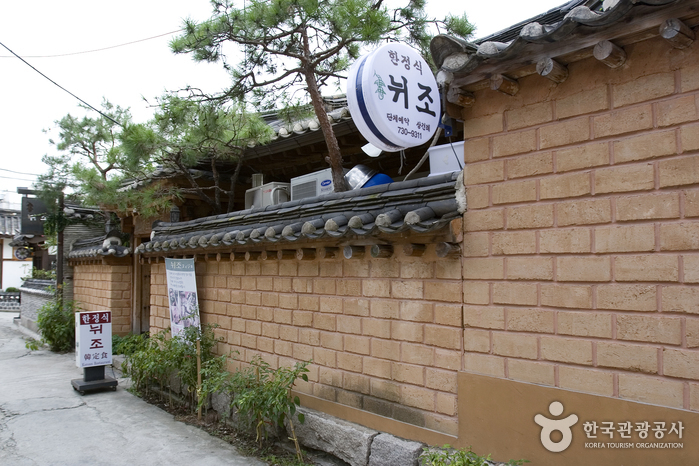
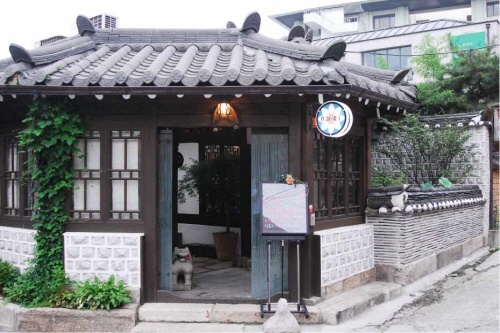
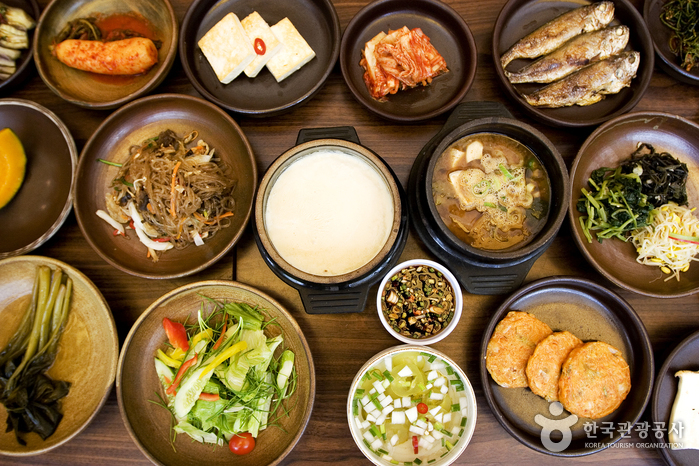
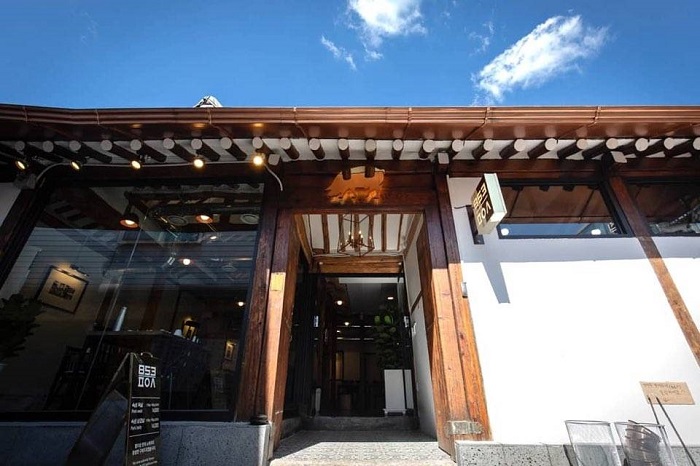
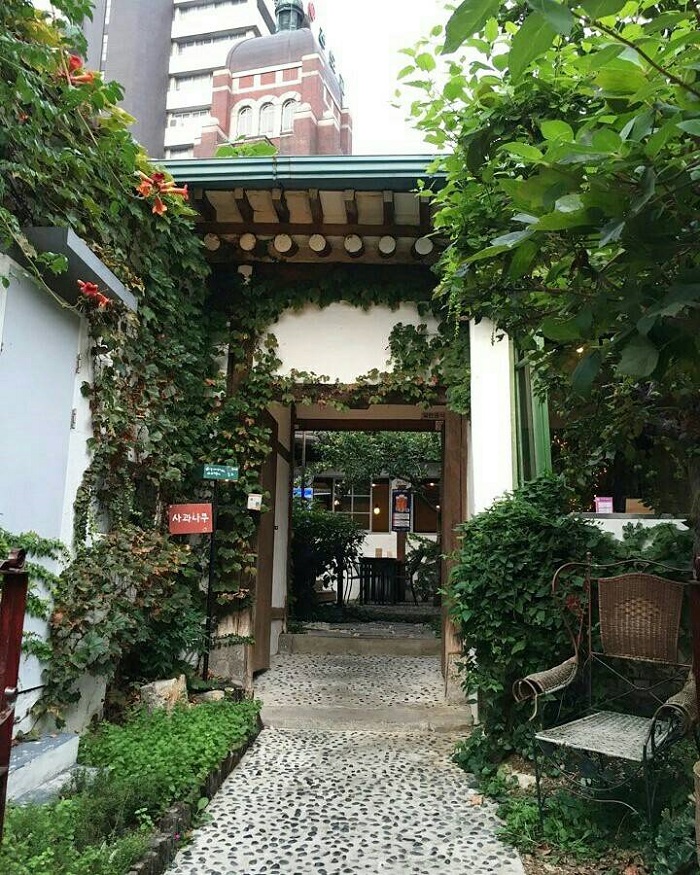
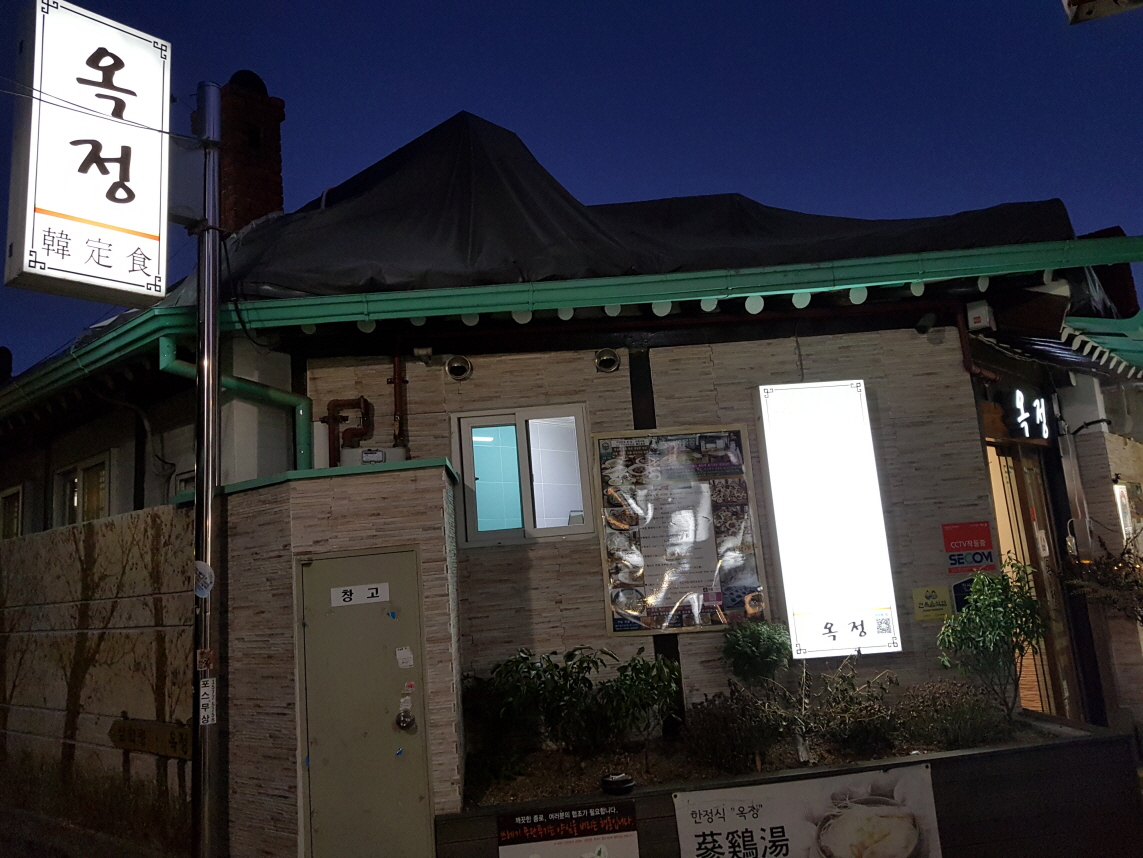
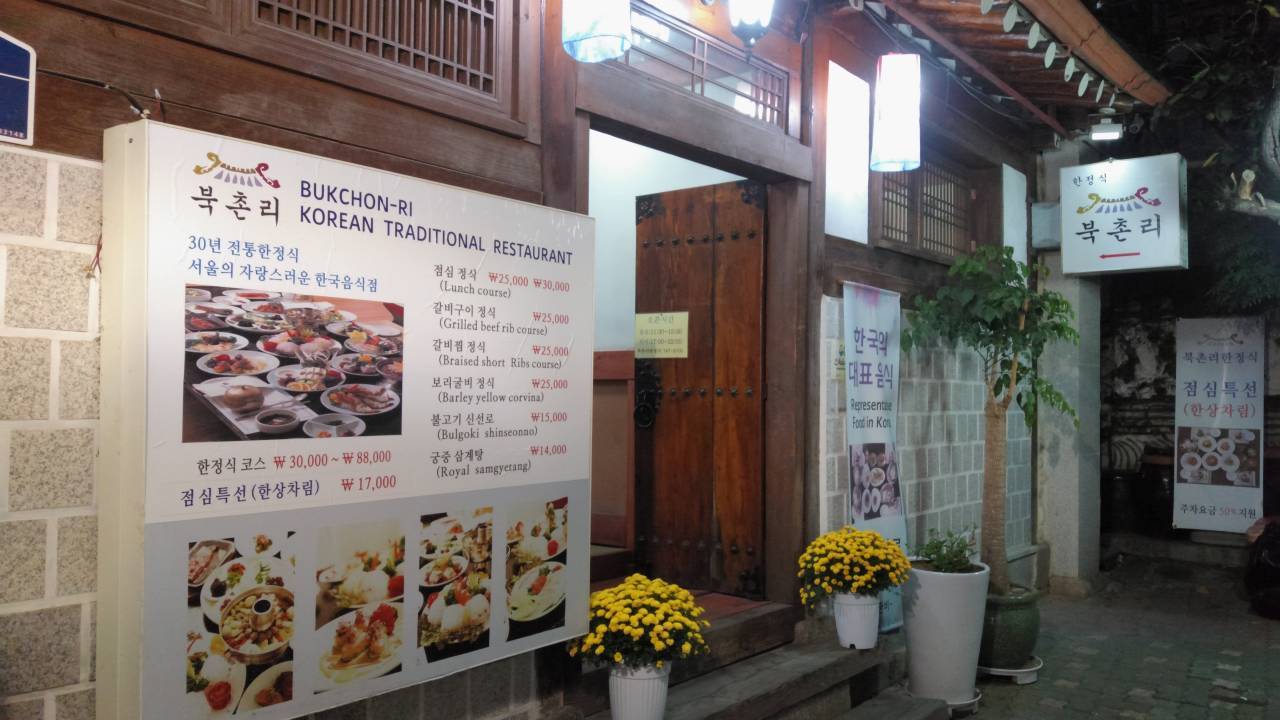
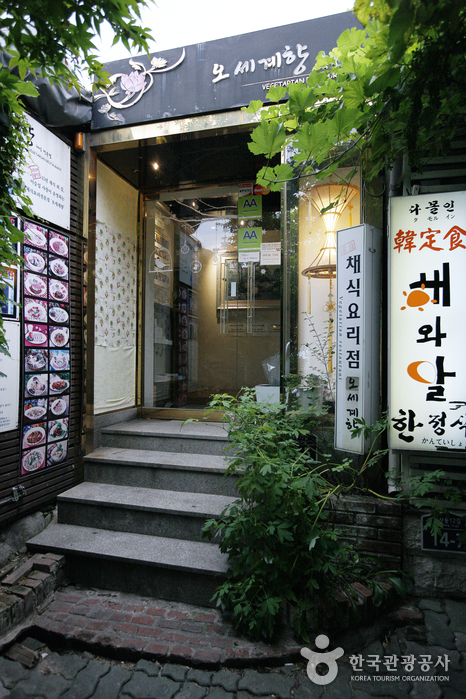
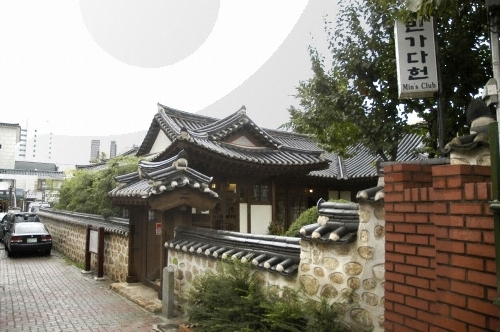
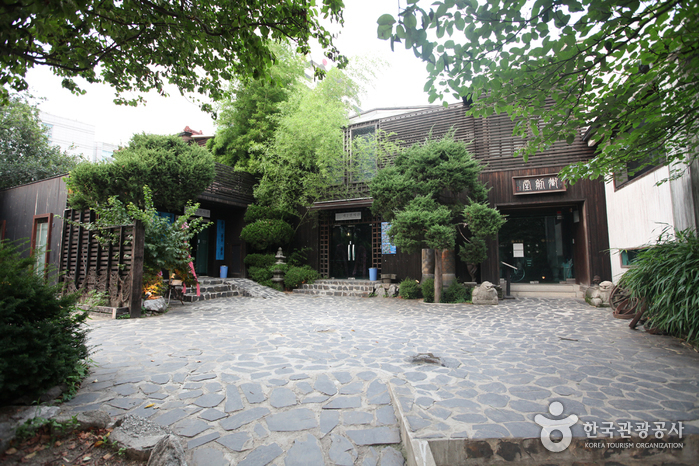
 Français
Français
 한국어
한국어 English
English 日本語
日本語 中文(简体)
中文(简体) Deutsch
Deutsch Español
Español Русский
Русский